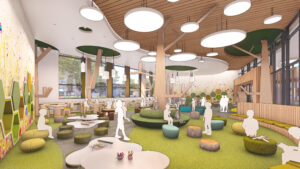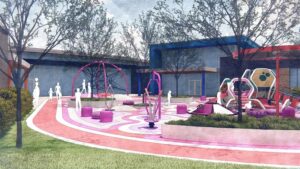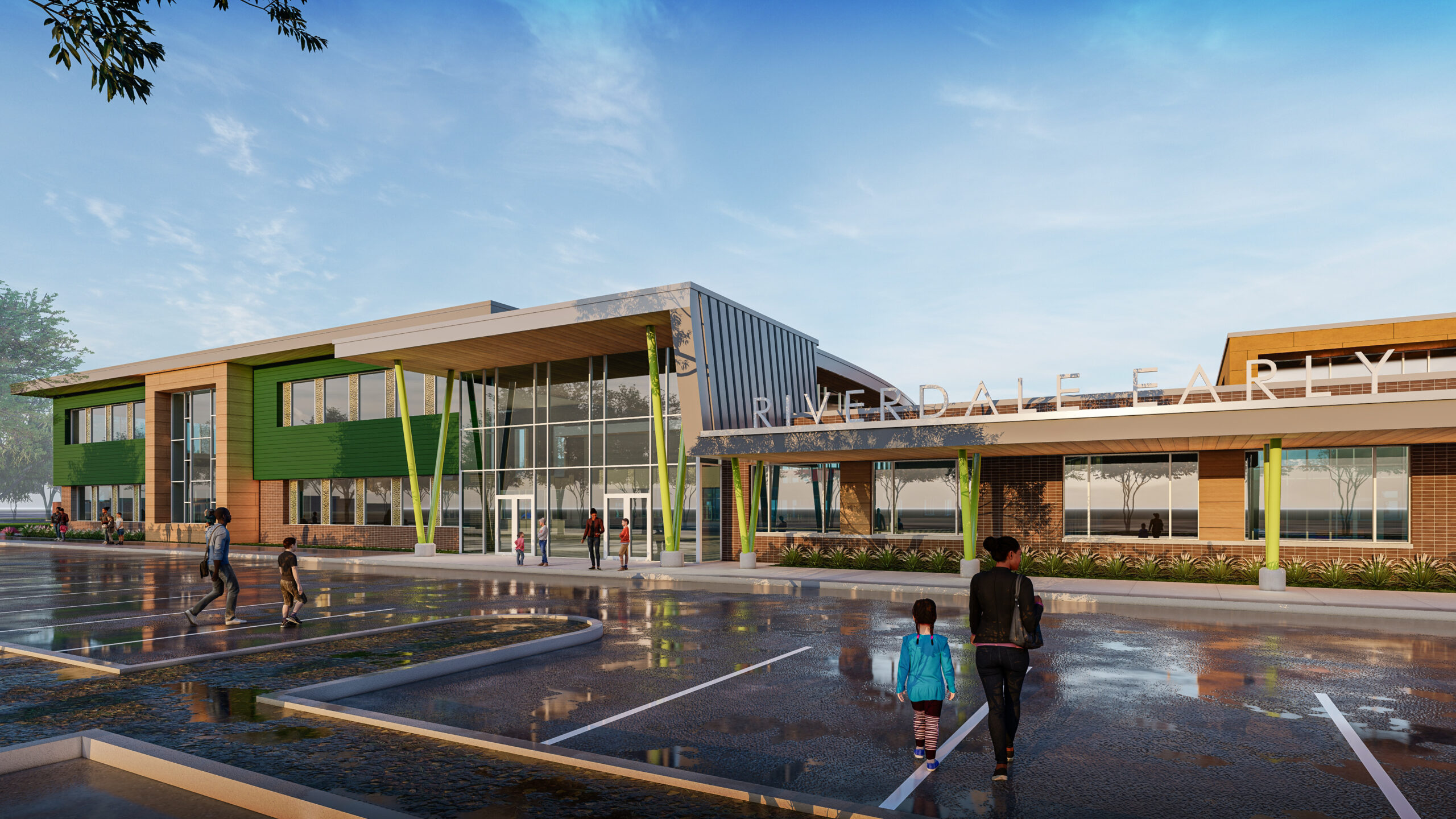Photo: The 24-classroom Riverdale Early Learning Center will serve an estimated 500 students. | Photo Credit (all): PBK
By Lindsey Coulter
Clayton County Public Schools will unveil a first-of-its-kind educational facility for Pre-K students at the start of the 2025-2026 school year. Designed by the nation’s largest K-12 architecture firm, PBK, the Riverdale Early Learning Center (Riverdale ELC) introduces new opportunities for young learners in the Atlanta metro area.

Tailored to early learners, Riverdale ELC is designed to provide students with a safe and secure space that is accessible and functional, while also remaining playful. Offering outdoor learning opportunities, the campus will include an accessible playground, amphitheater and four classroom clusters—each focused on a different geographical region in Georgia. In addition to a media center, STEM lab and rooms dedicated to art, music and play, Riverdale ELC will even offer wraparound services for community members such as vision and dental care, employment services and social services. This inclusive approach meant the PBK design team needed to carefully balance safety and security for students and educators without compromising a playful and nurturing environment.
“We were approached by Clayton County Public Schools to help get their enrollment rates back up,” said Bayleigh Kempainen, AIA, managing principal of PBK’s Sugar Hill, Ga. “The district lost a lot of students during COVID, and they found that a lot of their students weren’t graduating.”
As research shows that early exposure to fun and engaging learning environments increases the odds that students will successfully matriculate from high school, Kempainen explained, the purpose of the early Learning Center was multi layered. The project aims to meet the county’s pre-kindergarten education needs while reengaging students that had fallen off the radar and increasing their long-term educational success. The 24-classroom facility will serve an estimated 500 students; however, the project won’t just focus on young learners
“It’s more than just a Pre-K center,” Kempainen said. “It also includes wrap-around community services.”
These services include a daycare center, health clinic, counseling services, observation rooms that allow parents to watch their children engage in play therapy sessions and more. However, with the additional focus on community engagement and creating a true community resource, safety and security for students specifically was key.

The PBK design team took a multi-pronged approach to security, creatively working safety considerations into the structure without making the campus feel like a fortress. This included an awareness of sightlines into learning areas, integrating security technology and durable door hardware, and building discrete layers of security around students, starting at the classroom level and moving outward to the six-classroom pod level. The team considered how individual pods could be locked down to prevent access, if necessary, but maintained a sense of the pods as being a sort of welcoming home base for students.
“[Safety] was one of the top priorities, but we also balanced it with our interiors, creating engaging spaces where students can use their imaginations, get outside and have fun at school,” Kempainen said. “We were very careful not to allow any access to the Pre-K center from inside the building. From the outside, it all looks like one campus, but on the inside there’s no path from one [area] to the other.”
Additionally, the building’s angles create interior playgrounds, which further helps to control access, and most windows are positioned to look into the interior play spaces rather than to the building’s exterior. These spaces are also directly viewable from the principal’s office and teacher work rooms for added monitoring.
According to Kempainen, many of these safety and security tactics are client driven.
“Our responsibility as designers is to bring up the latest and greatest and trends that we see. That might be security detectors or double doors. We recommend these things but ultimately, [the client is] going to tell us what sort of technologies they’d like us to use. I feel like as we progress in the safety and security world, it is all becoming more technologically advanced.”
Learn more about the project in the May/June digital edition of School Construction News, which focuses on more safety and security topics and trends.


